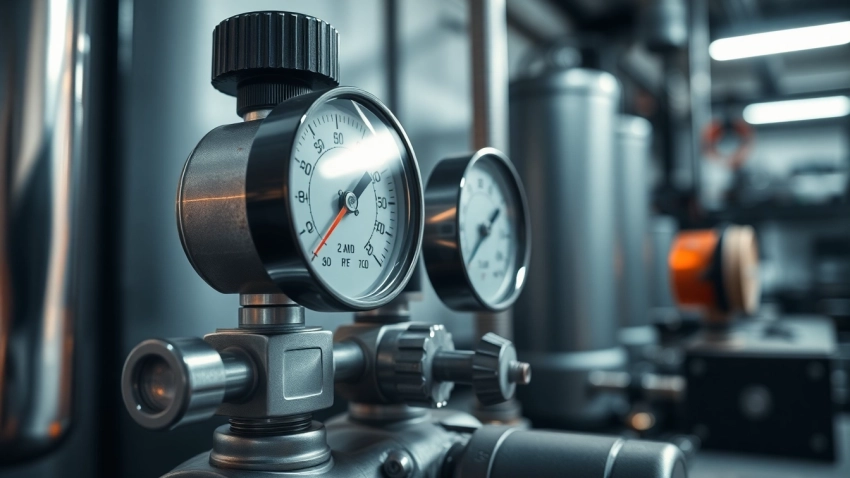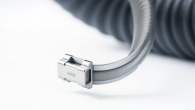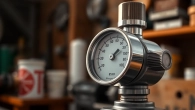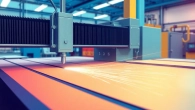
Understanding Nitrogen Regulators: Essential Guide for Optimal Gas Control
1. What is a Nitrogen Regulator?
1.1 Definition and Purpose
A nitrogen regulator is a crucial device that controls the pressure and flow of nitrogen gas from a storage cylinder to various applications in industrial, scientific, and commercial settings. By regulating the high-pressure gas to a usable level, nitrogen regulators facilitate safe and efficient operations in a multitude of environments, from food packaging to welding, and from HVAC systems to laboratory research. Their fundamental purpose is to ensure that the nitrogen supply remains consistent and within specified pressure limits, thereby maximizing both performance and safety.
1.2 Types of Nitrogen Regulators
Nitrogen regulators can be categorized based on various factors, including design, application, and functionality. The two primary types are:
- Single Stage Regulators: These regulators reduce the high pressure of nitrogen from the cylinder to a lower pressure via one pressure reduction step. They are often simpler, lighter, and less expensive, making them ideal for applications with constant pressure requirements.
- Two Stage Regulators: These devices employ two separate pressure reduction stages, offering enhanced accuracy and stability in pressure control. They are suitable for applications that demand precise flow rates and are more resilient to variations in the supply pressure.
1.3 Common Applications of Nitrogen Regulators
Nitrogen regulators are employed across various sectors, including:
- Food and Beverage Packaging: Nitrogen is commonly used to displace oxygen in packaging, thus prolonging shelf life and preserving product quality.
- HVAC Systems: In heating, ventilation, and air conditioning systems, nitrogen is used for pressure testing and leak detection.
- Welding: In welding applications, nitrogen provides an inert environment that protects the weld bead from contamination.
- Laboratory Research: Nitrogen regulators facilitate controlled environments for various experiments and analyses.
2. How a Nitrogen Regulator Works
2.1 Key Components Explained
Understanding nitrogen regulators requires familiarity with their essential components, including:
- Pressure Gauge: Displays the current pressure of the nitrogen within the system and allows operators to monitor changes.
- Adjustment Knob: Enables fine-tuning of the output pressure, allowing for precise control based on application needs.
- Inlet and Outlet Connections: Connects the regulator to the nitrogen source and the equipment utilizing the gas.
- Safety Features: Many regulators come with safety relief valves to prevent over-pressurization, protecting both the device and the connected systems.
2.2 Pressure Regulation Mechanism
The mechanism of nitrogen regulation generally revolves around a diaphragm that reacts to pressure changes. When the nitrogen gas enters the regulator, it exerts force on the diaphragm. As pressure levels change, the diaphragm flexes, activating the adjustment knob to maintain the desired output pressure. This feedback loop ensures that any fluctuations in the cylinder pressure are compensated for, providing consistent output pressure throughout operation.
2.3 Understanding Flow Rates
Flow rates in nitrogen regulators are determined by several factors, including the regulator’s design, the diameter of the inlet and outlet, and the pressure differentials across the regulator. Understanding flow rates is critical for application efficiency, as it dictates how quickly nitrogen can be delivered to process requirements. Many manufacturers provide specific flow rate charts, helping users to select the appropriate regulator for their needs.
3. Choosing the Right Nitrogen Regulator
3.1 Factors to Consider
Selecting the right nitrogen regulator involves assessing various factors, including:
- Application Requirements: Different applications necessitate different pressures and flow rates. Assess the specific needs of your tasks to select an appropriate regulator.
- Pressure Ratings: Ensure the regulator can handle the maximum pressure of your nitrogen cylinders.
- Compatibility: Check that the outlet size and type match your equipment’s requirements.
3.2 Comparing Features Across Brands
When evaluating different nitrogen regulators, it is essential to compare features such as:
- Durability: Look for regulators constructed from robust materials, such as brass, stainless steel, or aluminum.
- Ease of Use: Features like easy-to-read gauges and adjustable controls can enhance operational efficiency.
- Warranty and Support: Consider brands that offer solid warranty terms and responsive customer support.
3.3 Cost Considerations and Budgeting
The cost of nitrogen regulators can vary significantly based on their complexity, features, and brand reputation. It’s crucial to establish a budget while considering the long-term costs of maintenance and replacement. Opting for high-quality regulators may represent a higher initial investment but can lead to lower operational costs over time. Always evaluate the total cost of ownership rather than merely the purchase price.
4. Best Practices for Using Nitrogen Regulators
4.1 Safety Guidelines to Follow
Implementing stringent safety protocols is essential when working with nitrogen regulators. Some key guidelines include:
- Regular Inspections: Frequently check the regulator for wear, leaks, or signs of damage.
- Use Appropriate PPE: Always wear personal protective equipment (PPE), including gloves and goggles, when handling nitrogen cylinders and regulators.
- Proper Ventilation: Ensure that the working area is well-ventilated to prevent nitrogen buildup, which could create an asphyxiation hazard in confined spaces.
4.2 Maintenance Tips for Longevity
To maximize the lifespan and performance of a nitrogen regulator, users should follow maintenance tips such as:
- Cleaning: Regularly clean the regulator and check for dust accumulation that could affect performance.
- Sealing and Gaskets: Inspect seals and gaskets frequently, replacing them if they show signs of wear to prevent gas leaks.
- Storage: Store regulators in a cool, dry area away from direct sunlight to prevent degradation of components.
4.3 Troubleshooting Common Issues
Being able to troubleshoot common nitrogen regulator issues can save time and resources. Some common problems include:
- Inconsistent Pressure: When pressure fluctuates, ensure that the inlet pressure is stable and check for leaks in the sealing components.
- Leaks: If gas is escaping, look for cracks in the body or damaged gaskets. Apply soapy water to the connections to identify leak points.
- Gauge Malfunction: If the gauge does not read correctly, consider recalibrating or replacing the gauge altogether.
5. Conclusion and Future Trends
5.1 Summary of Key Points
Nitrogen regulators play a pivotal role in many industries, aiding in the safe and effective use of nitrogen gas. Understanding their types, mechanisms, and usage best practices is key to ensuring optimal performance and safety in applications ranging from food packaging to industrial processes.
5.2 Innovations in Nitrogen Regulator Technology
With advancements in technology, nitrogen regulators are becoming increasingly sophisticated. Innovations such as digital pressure gauges, smart sensors, and automatic shut-off valves are enhancing user experience, allowing better precision and safety in nitrogen management. Manufacturers are focusing on creating more user-friendly interfaces and improved designs that cater to specific industries, ensuring versatility and reliability.
5.3 Future Applications of Nitrogen Regulators in Industries
As industries continue to evolve, the applications for nitrogen regulators will expand as well. New sectors such as renewable energy and environmental engineering are beginning to incorporate nitrogen use in unique ways, from atmospheric control in solar energy facilities to controlled environments for clean energy generation. The growing focus on sustainability and efficiency will likely drive further innovation in nitrogen regulation technology, presenting new opportunities for businesses and regulators alike.
For those interested in purchasing quality nitrogen regulators, consider exploring various models and specifications to suit your needs. You can find a selection of nitrogen regulators available at nitrogen regulator sources specifically tailored for diverse applications.










Leave a Reply